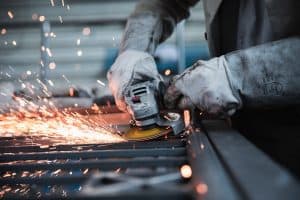Maximizing Efficiency in Manufacturing: Why Investing in the Right Equipment Matters
Efficiency is one of the most critical factors for success in manufacturing. The equipment you use has a direct impact on how smoothly operations run and whether you can meet your production goals.

Machines like tube and pipe benders, CNC machines, and other essential tools must work well to keep productivity high. When these systems are reliable, they help your business save both time and money. However, outdated or inefficient machinery can slow everything down.
This article will explain how aging tools can hurt your business. It will also show why you must invest in the right tools—new or used. They are essential for improving performance and staying competitive over the long term.
The Role of Equipment in Manufacturing Efficiency
High-quality equipment plays a major role in improving businesses’ productivity. When machines run smoothly, production lines stay efficient, reducing errors and costly downtime. Reliable machinery ensures that workers can focus on their tasks without unnecessary interruptions, which helps meet production goals faster.
In contrast, old or malfunctioning equipment slows everything down. When machines break down often, workers must spend time fixing them instead of completing their regular duties. This causes delays and lowers the overall quality of the work being produced.
That’s why it’s crucial to regularly check your equipment’s performance. Keeping track of how healthy machines function can help you spot problems early and decide when it’s time for repairs or replacements to keep your operations running efficiently.
Finding the Right Balance: New or Used?
When deciding between new and used equipment, it’s important to weigh the benefits of each option. Both have advantages, but the right choice depends on your business’s needs and budget.
New Machinery: New equipment often comes with the latest technology and improved energy efficiency. It’s less likely to experience breakdowns early on, and most new machines come with warranties, reducing the risk of unexpected repair costs.
Used Machinery: While used equipment can save you money upfront, it’s crucial to consider potential wear and tear, especially for complex machines like tube and pipe benders. For example, older or heavily used pipe benders may suffer from issues like tooling wear, material slippage, or hydraulic failures, leading to inefficiencies or downtime. Recognizing these common failures for pipe benders is necessary when purchasing. To better understand the specific challenges, you can refer to trusted online resources on common issues with tube and pipe benders.
Both new and used tools can improve your efficiency. But you must check the condition of any tools you use. They must meet your needs without recurring failures.
When to Consider Replacing Machinery
If your tools frequently break down, no longer meet production needs, or produce poor-quality results, it might be time to consider an upgrade. Constant repairs not only slow down work but can also become very costly over time. A good way to decide if you need new tools is to compare repair costs to the overall value.
If you’re spending more on fixing problems than it’s worth, an upgrade may be the better option. Whether you go for new or well-maintained used options, replacing outdated tools can improve efficiency and reduce costs in the long run. Making good decisions at the right time helps your business stay productive and avoid expensive downtime.
Why Upgrading Matters
Upgrading to modern equipment can drastically improve efficiency. New machines, including tube and pipe benders, come with improved precision and advanced features. These machines are designed to handle higher capacities and more complex tasks, reducing errors and increasing output.
Automation and other technological advances found in modern machines can further streamline production. Less manual work means fewer mistakes and a faster, more efficient production process. For businesses looking to scale, upgrading machinery is a must.
Protecting Your Investment
Investing in the right tools is just the beginning. Proper maintenance is key to making sure your investment lasts and delivers a good return. Regular inspections, proper lubrication, and timely repairs help prevent major breakdowns and keep things running smoothly.
Routine upkeep also allows you to catch small problems before they turn into bigger, more expensive issues. Whether you’re using brand-new or well-used equipment, sticking to a solid maintenance plan is essential for keeping your operations on track. A well-maintained tool will not only last longer but also perform more efficiently, helping your business avoid costly downtime and repairs in the future.
Conclusion
Investing in the right equipment is key to maximizing efficiency in manufacturing. While older machinery may seem like a cost-saving measure, frequent breakdowns, and poor output quality can ultimately slow down operations and increase costs. Evaluating your equipment’s performance and considering when to upgrade—whether with new or used machinery—can significantly boost productivity and save money in the long run.

